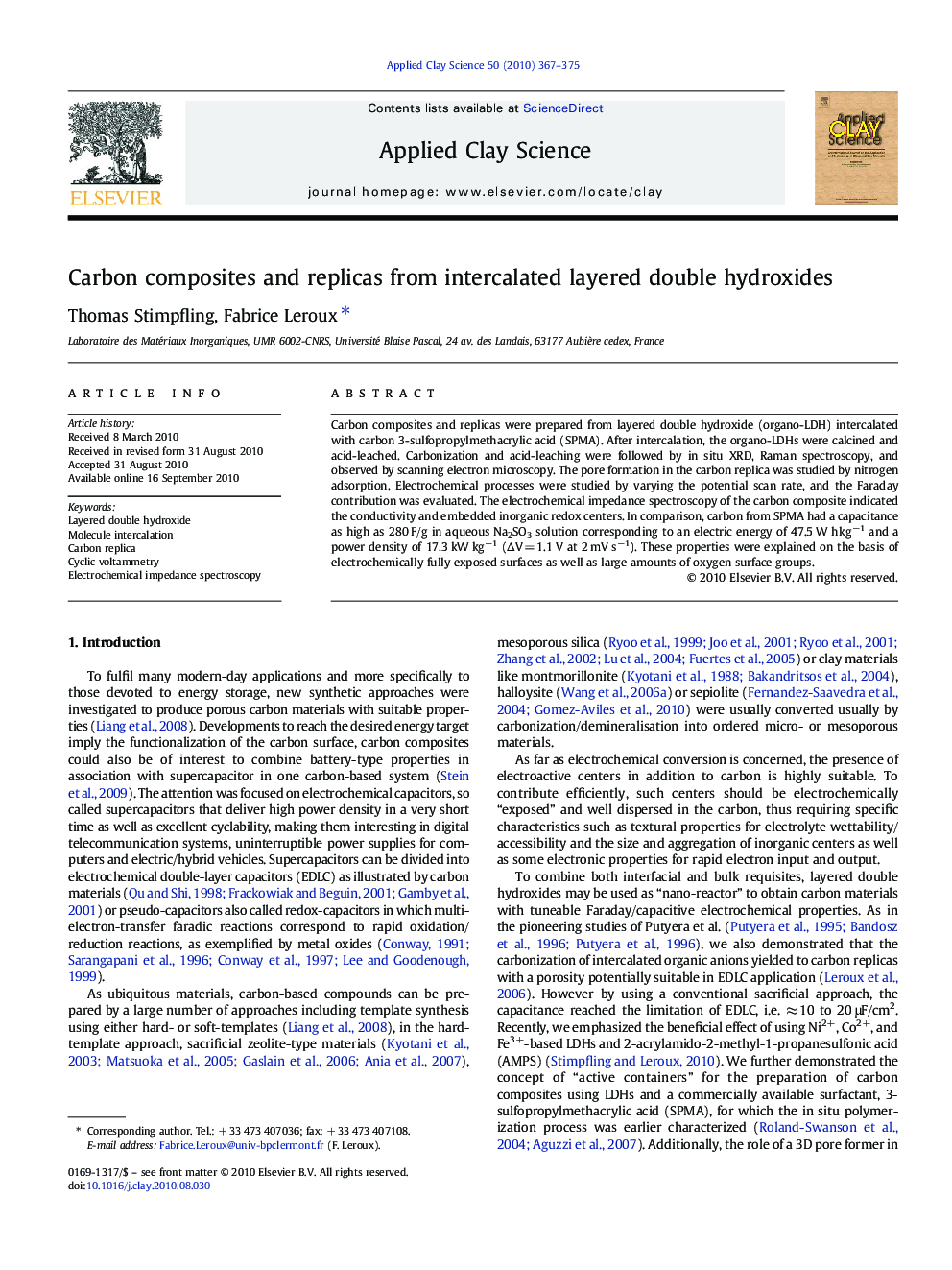| Article ID | Journal | Published Year | Pages | File Type |
|---|---|---|---|---|
| 1695682 | Applied Clay Science | 2010 | 9 Pages |
Carbon composites and replicas were prepared from layered double hydroxide (organo-LDH) intercalated with carbon 3-sulfopropylmethacrylic acid (SPMA). After intercalation, the organo-LDHs were calcined and acid-leached. Carbonization and acid-leaching were followed by in situ XRD, Raman spectroscopy, and observed by scanning electron microscopy. The pore formation in the carbon replica was studied by nitrogen adsorption. Electrochemical processes were studied by varying the potential scan rate, and the Faraday contribution was evaluated. The electrochemical impedance spectroscopy of the carbon composite indicated the conductivity and embedded inorganic redox centers. In comparison, carbon from SPMA had a capacitance as high as 280 F/g in aqueous Na2SO3 solution corresponding to an electric energy of 47.5 W h kg−1 and a power density of 17.3 kW kg−1 (ΔV = 1.1 V at 2 mV s−1). These properties were explained on the basis of electrochemically fully exposed surfaces as well as large amounts of oxygen surface groups.
Graphical abstractFigure optionsDownload full-size imageDownload as PowerPoint slideResearch Highlights► Layered double hydroxide is acting as an active or sacrificial container. ► Sequestration of 3-sulfopropylmethacrylate acid within LDH lamellar gap leads to carbon replica after carbonization process. ► Inorganic particles are acting as pore former during acid-leaching process. ► Capacitive and faradic response is evaluated by cyclic voltammetry in aqueous electrolyte.
